One of the best ways to start a brand new year is by exploring art which resonates with life, promise, joy, and beauty. Southern California-based artist Catherine Ruane exemplifies all of these in her work, and specifically in one large scale piece currently on display at the Los Angeles Art Association’s Gallery 825 as a part of LAAA’s signature survey exhibition featuring the best in emerging art.
The stellar Open Show 2016, on display now through January 13th, includes Ruane’s simply gorgeous, inspiring 36″ by 72″ “Minaret,” which is reason alone to take in the exhibition, juried by Jennifer Inacio of Perez Art Museum Miami.
![]()
Featured artists include:
Elizabeth Bailey, Kelly Berg, Clovis Blackwell, JT Burke, Mario Canali, Chenhung Chen, Nathaniel Clark, Jaime Coffey Bateman, Karen Duckles, Holly Elander, Birgit Faustmann, Laurie Freitag, Dwora Fried, Kaori Fukuyama, Miguel Galán, Danielle Garza, Tanner Goldbeck, Antoine Guilbaud, Yoon Chung Han, Gina Herrera, Sol Hill, Mark Indig, Paul Ivanushka, Lynda Keeler, Carol Kleinman, Kevin Michael Klipfel, Faina Kumpan, Tom Lasley, Barbara Lavery, Jung ji Lee, Stuart Marcus, Randi Matushevitz, Dan Monteavaro, Alexis Murray, Makan Negahban, Robert Nelson, Denise Neumark-Rreimer, Eric Oliver, Elizabeth Orleans, Thibault Pelletier, Lori Pond, Meghan Quinn, Margaret Raab, Catherine Ruane, Larisa Safaryan, Shilla Shakoori, Chris Shelby, Susan Swihart, Haikuhie Tataryan, Reisig and Taylor, and Terry Tripp.
We’ve written before on the stunning work of Chenhung Chen, whose life-filled sculptures vibrate with delicate, contained motion; Dwora Fried’s intricate tableaux that inspire passionate discussion; and the touching, funny miniature worlds of Tom Lasley. Each of them and so many more terrific artists are represented in this show. Do explore it.
But today, we are writing about Catherine Ruane, whose graphite and charcoal works, of which “Minaret” is one, are quite simply profound.
Above, “Minaret.” The perfect, delicate detail in this intricate black and white image of a fan palm is nothing short of astonishing. Rough fronds, the scaled surface of the palm’s trunk, the finely caught shadows – this is an image of life itself, contained is a literal and lovely evocation of a palm tree.
Viewers who study this work will find, as with so many of the artist’s pieces, something that goes beyond the literal, that morphs a perfect tribute to nature into something ethereal and transcendent.
“The ubiquitous palm tree is both a part of Southern California which is my home, but also a plant that is a survivor despite long hot summers. The tree was once used as a tall tower to call people to prayer before a temple with a minaret could be built. I am fascinated by how this tree has been used as a way to bring people to a place of spiritual calm. I experience an internal peace while carefully rendering all the complicated mix of details in the bark and leaves. Within the chaos there a structure of order. Opposites thrive,” Ruane says.
Above, “Transgression.”
Ruane’s work is pristine, but it’s almost photographic nature is just one part of what pulls the viewer into her world. She doesn’t just chronicle, she creates a transporting experience, pulling viewers into what feels like a sacred space, fecund with life.
Above, “Gila River II.”
Below, “Cloister.”
Her water series ripples with light, the life of the water is vivid motion and shadow; her cacti are so sharply drawn you can feel the spines.
Above, “Unravelled.”
About her palm series, the artist says “The palm tree is the iconic tree growing throughout much of Southern California, Arizona, and Mexico. The Washingtonia Filifera or California Fan Palm…defines my personal experience of ‘home.'”
Above, “Invocation.”
There is a sense of awe and wonder in each piece, a complexity that is as nuanced as it is sweeping. Above all, Ruane takes a realistic approach that is exceptionally vivid and at the same time that approach is entirely poetic. It is a true experience of beauty to look at her works, and to study their detail is to fall in love with them and the desert life they represent.
Above, “Chaparel,” yucca.
Here’s the thing: the natural beauty she depicts, whether it is her palms, water, or other desert plants, is truly wonderful. But she inhabits each aspect of this flora so viscerally and so completely that her work involves the viewer in the intrinsic life force of that particular piece of nature. One can feel it breathe, feel compassion and empathy for a growing thing, an eddy in a river, a sheaf of cactus blossoms. Feel admiration for the resilience of a desert plant, feel the danger of its spines, feel the magnificence of wind, water, branch — she creates a vibrant personality in each work. These are living beings that she shapes.
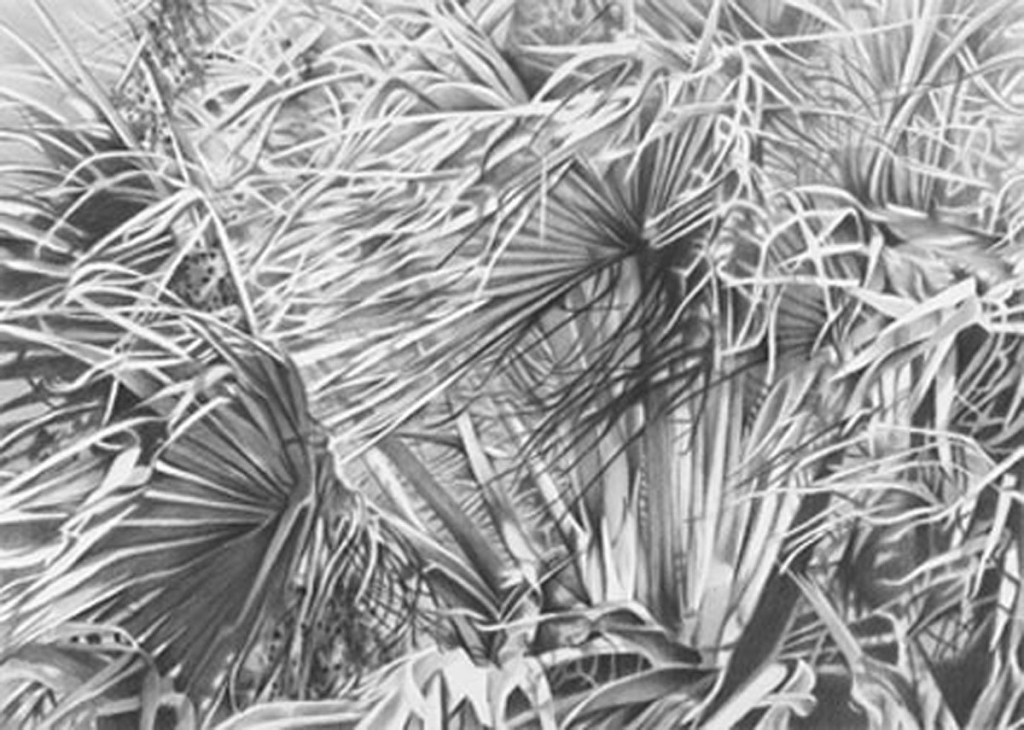
The artist also shares with the viewer a sense of discovery, both of the exceptional wonder of the natural images she depicts and of our ability to view them. Ruane says she hikes and explores the area around her home constantly, observing visual images that help her develop a work.
Feel the artist’s intimate observation in her “Constantine,” below, barbed wire pinning back desert blossoms.
Explore the glowing detail in this section of Ruane’s water series, below, focusing on the environmental improvements on the Gila River.
Do not miss a chance to view the lush, personal, thoroughly alive nature in Catherine Ruane’s work. It’s a beautiful way to start the New Year.
Catch Ruane’s “Minaret” in the exciting group show now at LAAA, located at 825 N. La Cienega in West Hollywood.
- Genie Davis; Photos: Courtesy of artist



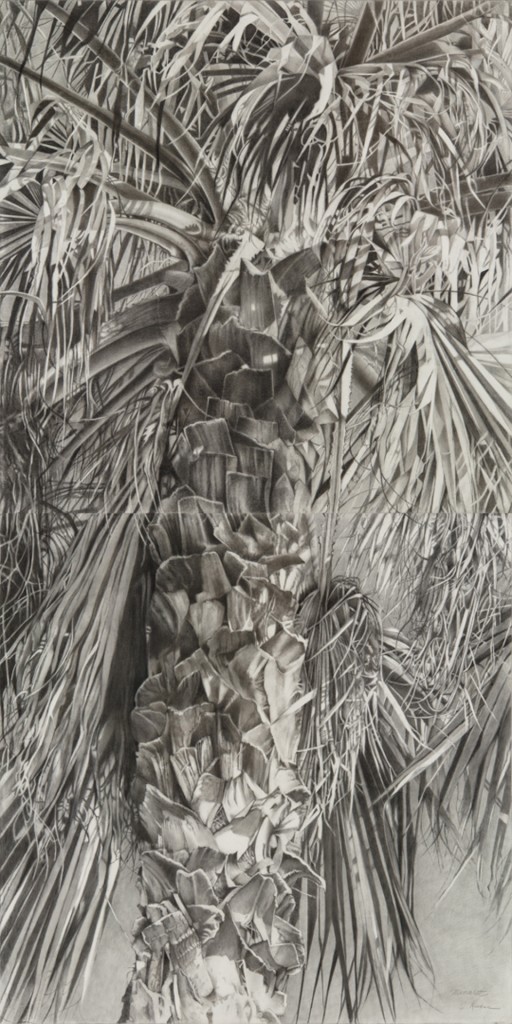
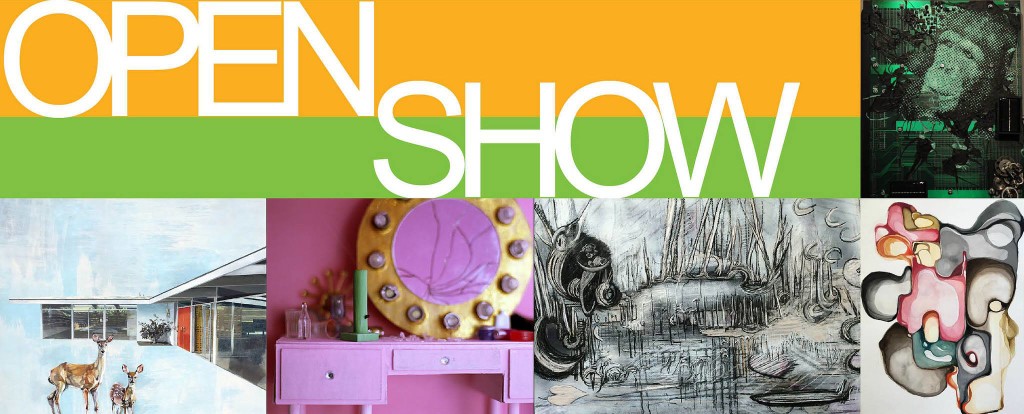

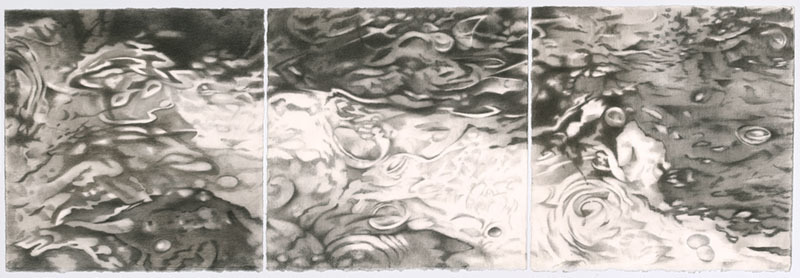

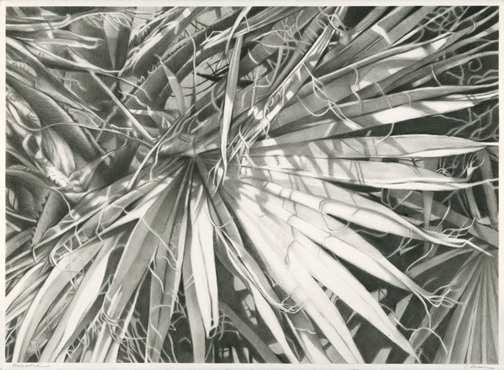
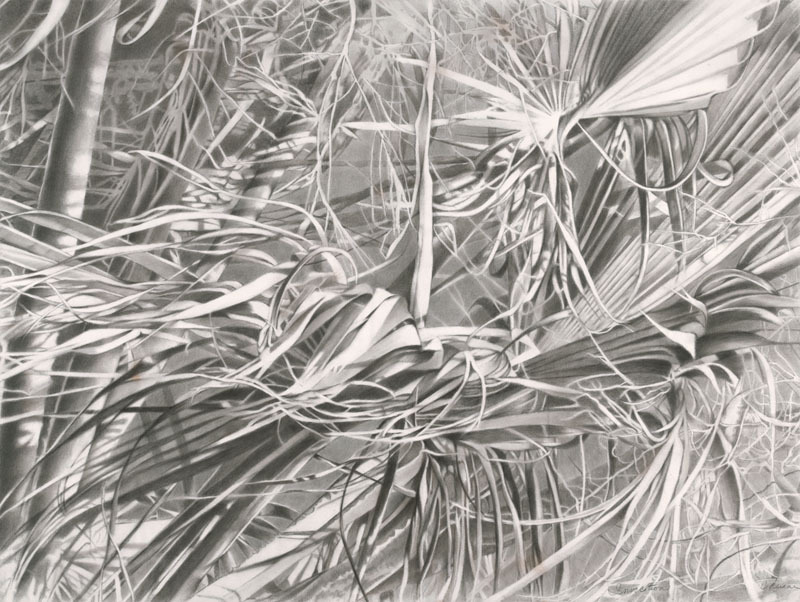



Profound critique, well thought out and. Knowledgeable. These images stunning. One would never tire of them!
i so agree – she’s amazing